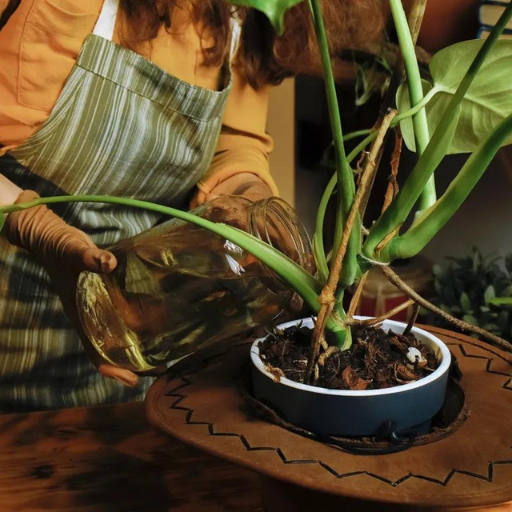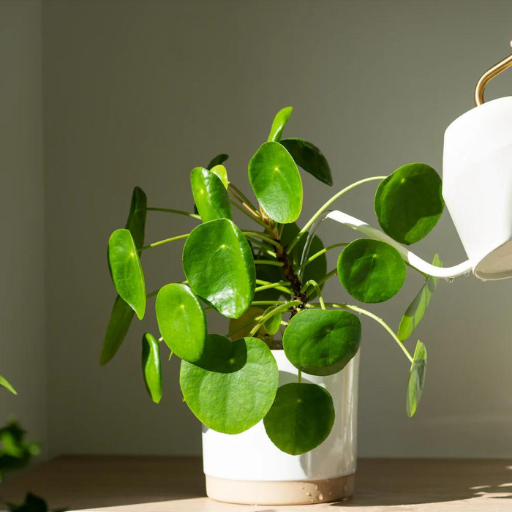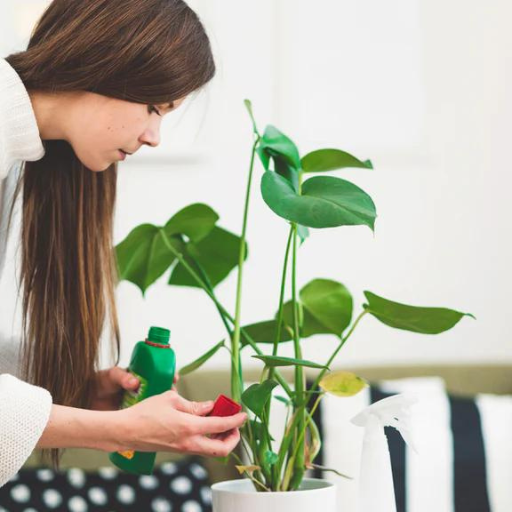With the growing popularity of indoor gardening, maintaining the health and vitality of houseplants has become a top priority for many plant enthusiasts. This blog aims to guide you through the best organic fertilizers available for houseplants to ensure they flourish indoors. From understanding nutrient requirements to identifying the most effective and eco-friendly products, we’ll cover everything you need to know to maximize your plants’ growth and beauty. Whether you’re a novice plant parent or an experienced green thumb, this comprehensive guide will help you make informed choices to keep your indoor garden thriving.
What is the Best Fertilizer for Houseplants?

Picking the Right Organic Fertilizer
The specific nutrient needs of your houseplants should always be taken into account when choosing a suitable organic fertilizer for them. A balanced fertilizer that gives nitrogen, phosphorous and potassium in equal proportions is preferred by most houseplants. Organic choices like worm castings, compost and liquid seaweed are good because they release nutrients slowly over time improving soil fertility. Another wonderful option is the use of fish emulsion which is high in nitrogen thus promoting leafy growth. It is also important to strictly follow application rates set to avoid over fertilizing your plants which can lead to their death.
Why LOYAL Is Popular
LOYAL organic fertilizer has received significant attention among indoor gardeners for several reasons. Firstly, it offers a well-balanced nutrient composition that meets the essential requirements of different houseplants thus allowing for optimal growing conditions and health maintenance. Second, LOYAL incorporates pure ingredients such as bone meal, kelp extracts and fish emulsion of the highest quality that enhance its efficiency and make it environmentally friendly at the same time. Lastly, LOYAL’s formulation comes with beneficial bacteria promoting nutrient uptake by roots leading to stronger plants with better resilience against plant diseases. Furthermore, people find easy steps that need to be followed during its application as well as consistent outcomes after usage as perfect references that have made LOYAL stand out in organic houseplant care.
Advantages of Liquid Fertilizers
One reason why many gardeners prefer liquid fertilizers for their indoor plants is because they have several advantages over other types of fertilizers. One major benefit is their ability to provide instant nutrition; this means that plants can quickly absorb essential elements required for growth. This becomes very useful during critical stages of development or when signs of lack in some nutrients are observed on plants.
Specifications:
- Nutrient Availability: Dissolved plant food elements from liquid fertilizers are easily absorbed through roots or leaves. This immediate availability ensures rapid nutrient uptake and quick correction of deficiencies.
- Ease of Application: Liquid fertilizers can be used for direct soil application or foliar spraying. They are therefore versatile and easy to use. Accurate dosages can be easily measured, as well as its uniform distribution, which helps to reduce the risk of high dosage application.
- Nutrient Concentration: Generally, liquid fertilizers have a higher concentration of nutrients and usually require dilution prior to their use. This allows for customized feeding regimes meant to suit varying needs among different plants.
- pH Balance: The pH is often balanced in liquid fertilizers so that it does not interfere with the natural soil pH which is very important in ensuring proper nutrient absorption.
To sum up, these attributes among others such as speed of action, ease of use and possibility for controlling the amount fed make liquid fertilizers an excellent choice when promoting healthy, robust growth of plants.
How to Use Organic Fertilizer for Indoor Plants?
Proper Dilution Techniques
Properly diluting organic fertilizer is crucial to avoid harming your indoor plants and to ensure they receive the right balance of nutrients. Here are some essential steps and tips to follow:
- Read the Manual: Always start by reading the manufacturer’s instructions on the fertilizer package. These guidelines will provide specific dilution ratios that are best suited for the fertilizer’s composition.
- Water-to-Fertilizer Ratio: Typically liquid organic fertilizers are commonly diluted at 1 tablespoon of fertilizer per 1 gallon of water. However, this can vary according to manufacturer’s recommendations.
- Mix Very Well: Ensure that the fertilizer solution is mixed thoroughly. Stir well to make sure the nutrients are evenly distributed in the water.
- Test Your Solution: Before applying the fertilizer to your plants, it’s a good idea to test solution on one plant only. Observe for any adverse reactions over a few days then if it shows no signs of distress, fertilize all other indoor plants accordingly.
- Apply Conservatively: It’s better to use less than too much. Over-fertilization can lead to nutrient burn harming your plants. Start with a weaker solution if unsure and gradually increase concentration if needed.
- Use Quality Water: Whenever possible, use distilled or rainwater to mix your fertilizer solution as tap water may have chlorine and other chemicals that could affect how well your organic fertilizer works.
By following these steps, you can ensure that your indoor plants receive the essential nutrients they need without the risk of over-fertilization.
Frequency of Application
The frequency of applying organic fertilizer to indoor plants can vary based on the type of plants and needs specifics indicated by such kind of fertilizers. Normally, during growing season which usually starts from spring through early fall it is advised that indoor plants be fertilized every 2-4 weeks. During winter dormancy reduce application frequency upto once every eight weeks or avoid completely but always observe and adjust feeding schedule accordingly since some require more often while others function optimally with limited feeding. Regular monitoring will help you understand your indoor plant’s needs with respect to nutrient uptake from the fertilizer regimen being applied.
Applying Fertilizer to Different Types of Pots
The type of pot in which your plant resides can significantly impact how you apply fertilizer. Here are some guidelines based on the most common types of pots:
- These pots can absorb moisture and nutrients as they are porous unlike other pots made using different material. This is why terracotta pots may need to be fertilized more frequently since nutrients can leach out of them faster. Make sure the fertilizer solution gets to the plant roots and does not just enter into the pot walls.
- Plastic pots are non-porous and can hold moisture well, so there is no loss of nutrients from the pot walls. On the other hand, this may result in over-watering that leads to waterlogged soil. Be careful when applying fertilizer so as not to create an environment that is too moist and therefore encourages root rotting.
- Glazed ceramic pots behave like plastic ones because they do not absorb water or nutrients. Like plastic ones, they retain some moisture hence care should be taken with watering. Less frequent fertilization with better drainage should prevent nutrient buildup and potential over-fertilization.
- Due to their excellent drainage and aeration properties, fabric pots are ideal for either hydroponic or soil-based systems. Consistent feeding with diluted fertilizer solution is necessary to maintain nutrient availability as nutrients can quickly leach through the high amount of drainage.
- You can optimize nutrient uptake and prevent common missteps linked to over- or under-fertilization by customizing your fertilization approach according to the kind of pot.
By tailoring your fertilization approach to the pot type, you can optimize nutrient uptake and avoid common pitfalls associated with over- or under-fertilization.
What Nutrients Do Houseplants Need?

The Significance of Nitrogen, Phosphorus, and Potassium
For houseplants to grow well, a balanced diet of nutrients is needed; nitrogen (N), phosphorous (P) and potassium (K) are the three most important components.
- Nitrogen (N): Nitrogen is essential for vegetative growth as it plays a crucial part in chlorophyll synthesis which is important for photosynthesis. With enough nitrogen, plants will have rich green foliage and healthy outlook overall.
- Phosphorus (P): As an energy transfer molecule necessary for root development, phosphorus helps to form DNA/RNA while it also supports flowering and fruiting during the reproductive phase of plants’ life cycle.
- Potassium (K): Among others physiological processes potassium controls water uptake, enzyme activation as well as disease resistance. Through this way, plants can resist stress and become more vigorous enhancing their general health by enhancing plant metabolism.
They should be properly balanced with relation to their plant needs for optimum growth and productivity.
Other Additional Micro-nutrients that are Required
Besides nitrogen, phosphorous, and potassium; other micro-nutrients are necessary for supporting various physiological functions and healthy growth in houseplants. Some of the key micro-nutrients include:
- Calcium (Ca): This mineral is very vital in maintaining cell wall structure stability as well as facilitating nutrient transport within plants while at the same time activates some enzymes. Low levels of calcium could retard growth or cause blossom-end rot in affected plants.
- Magnesium (Mg): Being integral part of chlorophyll within leaves of green plants magnesium facilitates photosynthesis. Enzyme activation/energy production is another role played by it. Yellowing between veins and stunted growth characterize magnesium deficiency symptoms.
- Iron (Fe): Iron,majorly involved in the synthesis process of chlorophyll molecules which drives overall plant metabolism among other things leads to energy transfer in a plant’s body. A yellowing leaf with green veins is a symptom of iron-deficiency.
- Manganese (Mn): Manganese works as a co-factor in enzyme systems involved in photosynthesis and nitrogen assimilation, among other things. Symptoms of manganese deficiency may include interveinal chlorosis or necrotic spots on leaves.
- Zinc (Zn): It plays an important role in auxin production, enzyme functioning. Reduced growth and stunted petiolate are common symptoms of zinc deficiency.
- Copper (Cu): Copper is involved in photosynthesis, respiration and lignin synthesis. Insufficiency of this element leads to wilting and browning leaf tip.
- Boron (B): Boron helps with cell wall formation as well as membrane function. It supports sugar transport and reproductive growth. Brittle new leaves that curl downwards at the tips could be a sign of boron deficiency.
- Molybdenum (Mo): This mineral is necessary for nitrogen fixation and nitrate to ammonium conversion. Leaf yellow-ing or distorted leaf development indicate molybdenum deficiency.
Your houseplants should receive these essential micro-nutrients along with the primary macronutrients to encourage strong healthy growth for them. With a regularly used balanced fertilizer designed specifically for household plants, all these nutritional requirements will be met.
Understanding NPK Ratios
The NPK ratio provides the relationship between these three essential macronutrients that supplements contain: Nitrogen (N), Phosphorus (P) Potassium (K). Foliage requires Nitrogen most while Phosphorous promotes root system establishment then flowering occurs within it which can only take place if potassium nutrient is present thus enhances general plant well-being by making it less prone to diseases. An ideal example would be 10-10-10 which has equal amounts of each nutrient required for general plant health; however, different plants or stages may demand various ratios such as higher nitrogen for leafy vegetables and more phosphorous for flowering plants. By understanding and adjusting NPK ratios, you can tailor fertilization to meet the specific needs of your plants, ensuring optimal growth and productivity.
Can You Use Organic Fertilizers on Flowering Plants?

Best Fertilizers for Flowering Houseplants
When identifying the ideal fertilizers for flowering houseplants, it is important to pick ones that support blooming and promote general plant health. some of them are:
- SHANDONG LOYAL CHEMICAL 10-30-20: A highly phosphorous water-soluble fertilizer that’s essential in promoting healthy root development and vibrant blooms. It can be used easily and ensures that flowers get adequate nutrients.
- Schultz All Purpose 10-15-10 Plant Food Plus: This too is another fertilizer with a balance mix, which enhances leaf growth while boosting flower production. The dropper application method makes it easier to measure exact quantities of food for use on houseplants.
- Ecoscraps Organic Tomato and Vegetable Plant Food 5-4-6: Although this organic fertilizer was initially designed for tomatoes and vegetables, it works well with flowering plants. It contains natural elements capable of making attractive blooms possible via nourishing soil; hence any flowering houseplant may benefit from its use.
These fertilizers are successful in providing the right nutrients for flowering houseplants thus help them produce abundant, vibrant blooms while maintaining overall plant health.
Benefits for Succulents and Cacti
Succulents and cacti are known widely because they can withstand droughts well as having ease of maintenance; hence they remain the choice plants both experienced gardeners as well as novices alike. Feeding them accordingly can greatly enhance their growth rates and general wellness. below are some benefits of fertilizing succulents and cacti:
- Improved Growth: Continuous nourishment through fertilization gives succulent plants essential nutritional supplements that accelerate their growth into healthier more vigorous specimens. Using appropriate feedings may result in faster, stronger growing succulent plants which result in brighter greener as well as denser foliage.
- Enhanced Colour and Blooming: The use of Fertilizer promotes coloration and general outlook of these plants. In addition, they make the greens more vibrant and in some instances trigger blooms among specific species which result into more frequent colorful flowers.
- Stronger Root System: Strong roots are products of a proper diet and healthy soil. For water absorption and nutrient uptake, succulents need healthy root systems as well as support against wind damage.
- Increased Resistance to Pests and Diseases: Fertility is a factor that tends to go with tolerance to pests and diseases. With this nutrition packed environment, succulents can stand odd weather conditions better than their counterparts thus allowing for faster recuperation from any type of attack.
- Easy Maintenance: When it comes to fertilizing succulents and cacti, they usually need less application frequency compared to other plant types. Depending on the individual’s preference, slow release or liquid balanced fertilizer can be used over time in order to simplify provision of nutrients required for survival by hardy plants if you wish so.
In conclusion, proper fertilization plays an important role in ensuring that succulents and cacti remain healthy while also bringing out their best colors and growth potentials as well as protecting them against common problems.
How to Choose the Best Organic Houseplant Fertilizer?

Considerations to Make When Choosing Fertilizer
When selecting the best organic houseplant fertilizer, there are several factors I consider in order to ensure that my plants receive optimum nourishment. First, I check for balanced nutrient composition by making sure that the fertilizers have essential macro and micronutrients required by my particular household plants. Second, I look at the form of fertilizer—compost or liquid or slow release—and select one that matches with my plant’s feeding schedule and maintenance preferences. Lastly, I check on the ingredient quality whereby I go for those made from sustainable and natural sources toward promoting a healthy and eco-friendly growing environment. In this way, I can confidently choose a fertilizer that supports robust growth as well as vibrant colors.
Comparison Among Organic Fertilizers
Among different organic fertilizers, three of them scored highest based on nutrient balance, ease of use and sustainability.
- Worm Castings: The first option is worm castings which are highly effective natural fertilizers. Worm castings contain various important nutrients such as nitrogen, phosphorous, and potassium. They also improve soil aeration and water holding capacity thus making them suitable to be used in a range of houseplants. Moreover, worm castings feed plants slowly hence reducing chances for nutrient burn.
- Fish Emulsion: Another option under consideration was fish emulsion known for its ability to act fast once applied onto crops’ leaves. With loads of nutrients plus beneficial microorganisms supporting vigorous plant growth coupled with better soil health properties; any grower can really benefit from fish emulsion . It is however particularly useful in giving a quick nutrient boost to indoor plants exhibiting signs of deficiency though it has to be applied more frequently compared to slow-release forms due to being liquid fertilizer.
- Compost Tea: The third one is compost tea whose main advantage lies not only in its balanced nutrient profile but also enhancing soil microbial activity among other benefits This type of manure is produced by soaking compost in water creating a highly nutritive tea which can be directly applied onto plants. By doing so, the plants are protected from attack by pests and diseases hence promoting a sustained plant health.
By evaluating these top organic fertilizers, I can ensure my houseplants receive the best possible care through naturally sourced, effective nourishment.
Frequently Asked Questions (FAQs)

Q: What is the best organic indoor plant food for house plants?
A: The best composts are often brands like Espoma Organic, which is known for giving your indoor plant all of its essential nutrients to keep it alive and thriving in your home.
Q: How often should I use indoor plant fertilizer on my potted plants?
A: It is generally recommended to use indoor plant fertilize every 2-4 weeks throughout the growing season. Always follow the package’s instructions for application so that you do not over-fertilize your potted plant.
Q: Can Espoma Organic Indoor Plant Food be used on all indoor plants?
A: Yes, Espoma Organic Indoor Plant Food is a type of all-purpose liquid fertilizer that can be used with many different types of houseplants such as pothos, snake plant and fiddle leaf fig.
Q: How do I use a liquid concentrate plant fertilizer like Espoma Organic?
A: You typically mix a certain amount per quart of water when using a liquid concentrate plant fertilizer. For instance, you might add 1-2 teaspoonfuls of this concentrate into one quart of water and then apply it to the soil of this particular flowerpot.
Q: Is an 8 oz bottle of plant food sufficient for a season?
A: An eight ounce bottle might last depending on how many plants you have and what their specific requirements might be. If used as directed, then it should cover several months if you feed it regularly.
Q: What organic products are best for different types of house plants like pothos or spider lily?
A: Such organic products as Espoma Organic and Fox Farm make great choices across different kinds of houseplants; these products provide a balanced blend of nutrients that work well with various other species like pothos, spider lily or monstera.






